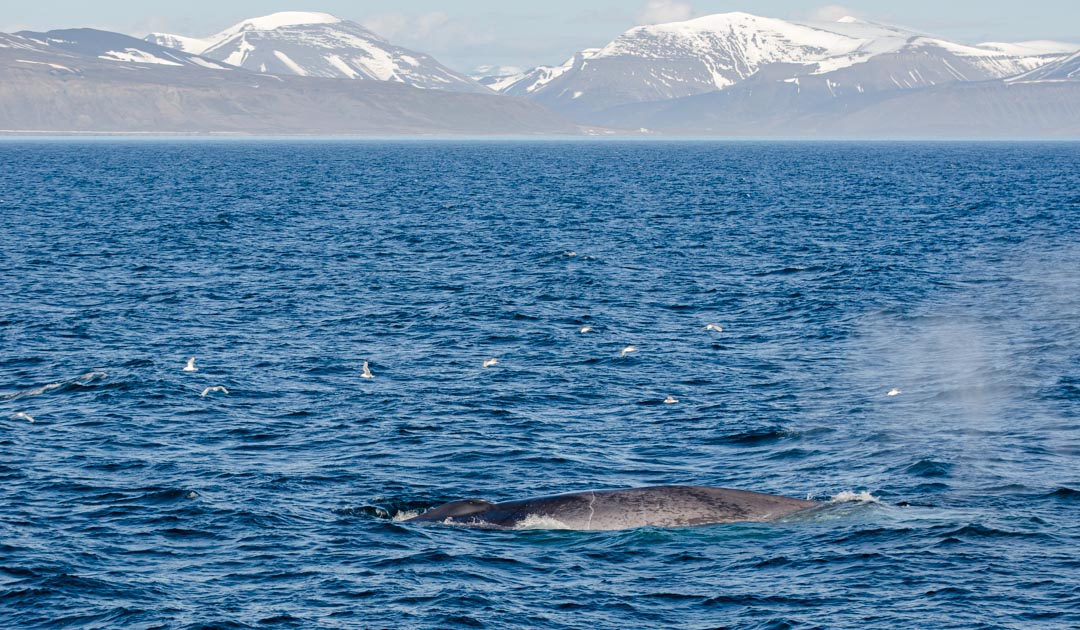
Studying whales in the world’s oceans is no simple task. Scientists around the world are making immense efforts to locate the animals so that they can learn more about them. They use data from satellites, aerial photographs, hydrophones or try to sight them directly. But these are usually only snapshots; longer-term monitoring is only possible with animals equipped with GPS transmitters. Now, for the first time, researchers at the Norwegian University of Science and Technology (NTNU), Trondheim, have succeeded in continuously eavesdropping on and locating baleen whales in near real time by tapping into underwater fiber optic cables off Svalbard.
The entire world ocean is crisscrossed by some 1.2 million kilometers of fiber optic cables, which are used for telecommunications and hold enormous potential for whale research. The technique is called Distributed Acoustic Sensing (DAS) and uses an interrogator on land to tap into a fiber optic system and turn it into a virtual array of hydrophones.
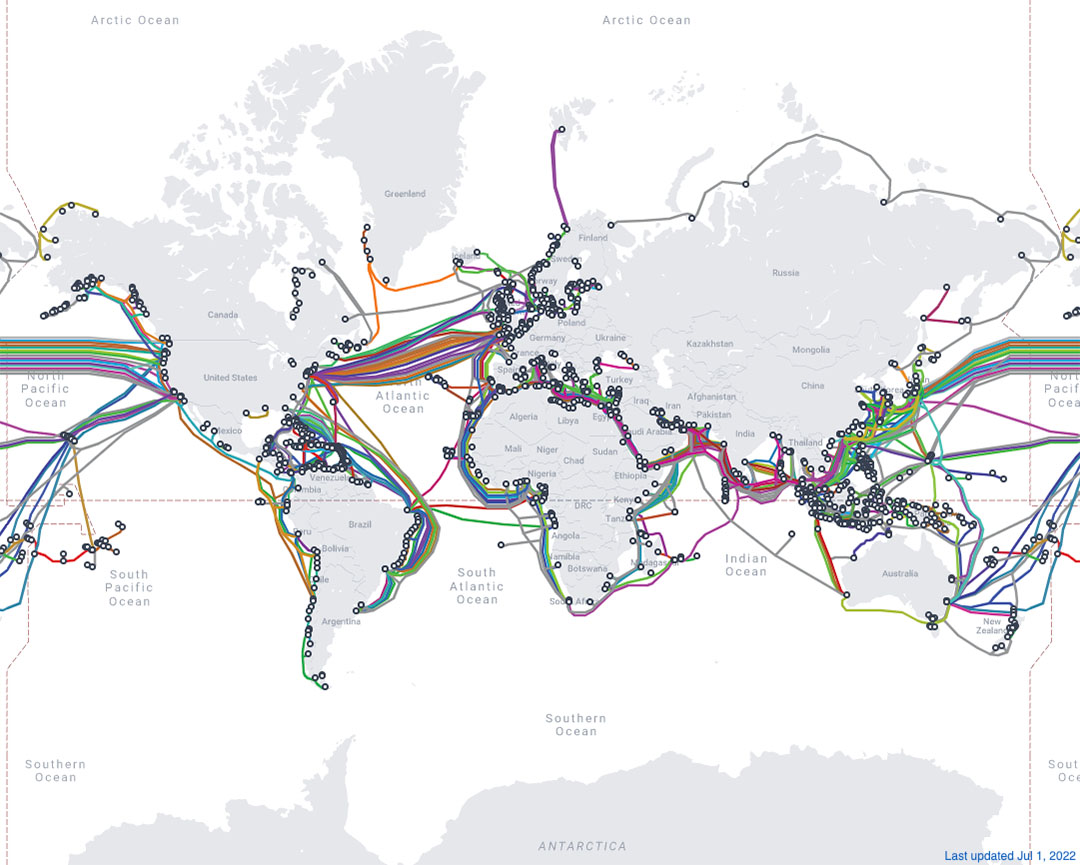
One of the few submarine cables in the Arctic is the one that went into operation in 2015 between Longyearbyen and Ny Ålesund on Spitsbergen, which the research team used for the study published in the journal Frontiers in Marine Sciences. Blue whales and other baleen whales forage in and off Isfjorden during the summer. For forty days in June 2020, two researchers were able to use the interrogator and listen to the 120-kilometer fiber optic cable.
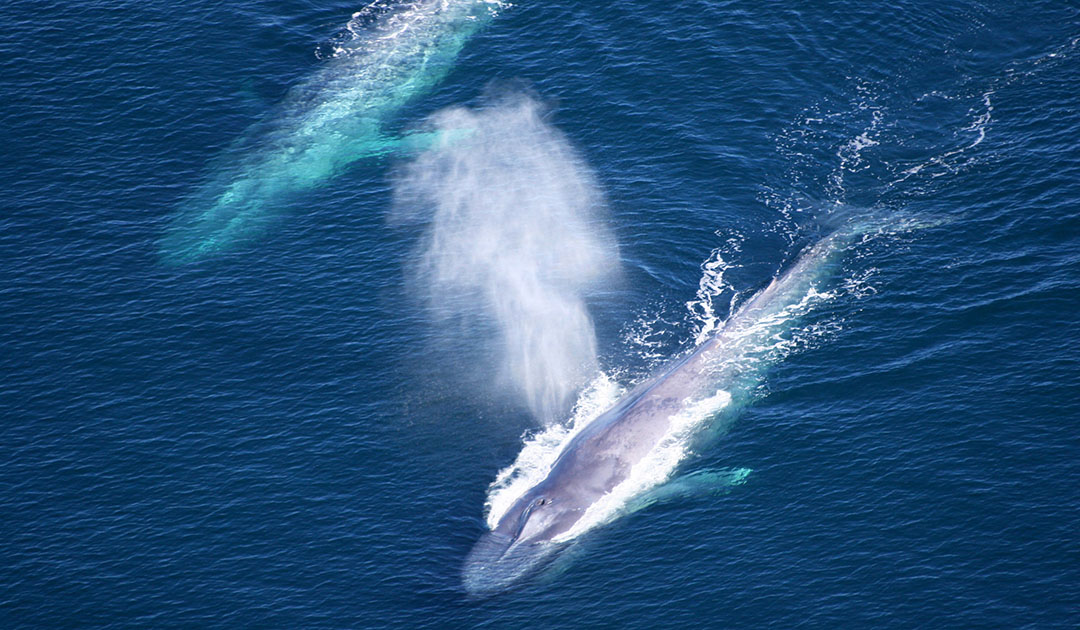
«I think this can change the field of marine bioacoustics,» says lead author Léa Bouffaut, who was a postdoctoral fellow at NTNU and now continues her research as a postdoctoral fellow at the K. Lisa Yang Center for Conservation Bioacoustics at Cornell University. «Deploying hydrophones is extremely expensive. But fibre optic cables are all around the world, and are accessible. This could be much like how satellite imagery coverage of the Earth has allowed scientists from many different fields to do many different types of studies of the Earth. To me, this system could become like satellites in the ocean.»
In addition, hydrophones are installed in only a few locations, they cover only a limited area, and they are not evenly distributed across the ocean, making it difficult to study migration routes, for example.
“So by studying their sound production, their calls and their vocalizations, we can learn a lot about them. We can learn where they are during different seasons, and how and where they migrate to. So we get a lot of information by eavesdropping on them,” says Hannah Joy Kriesell, a postdoctoral researcher at NTNU and co-author of the study.
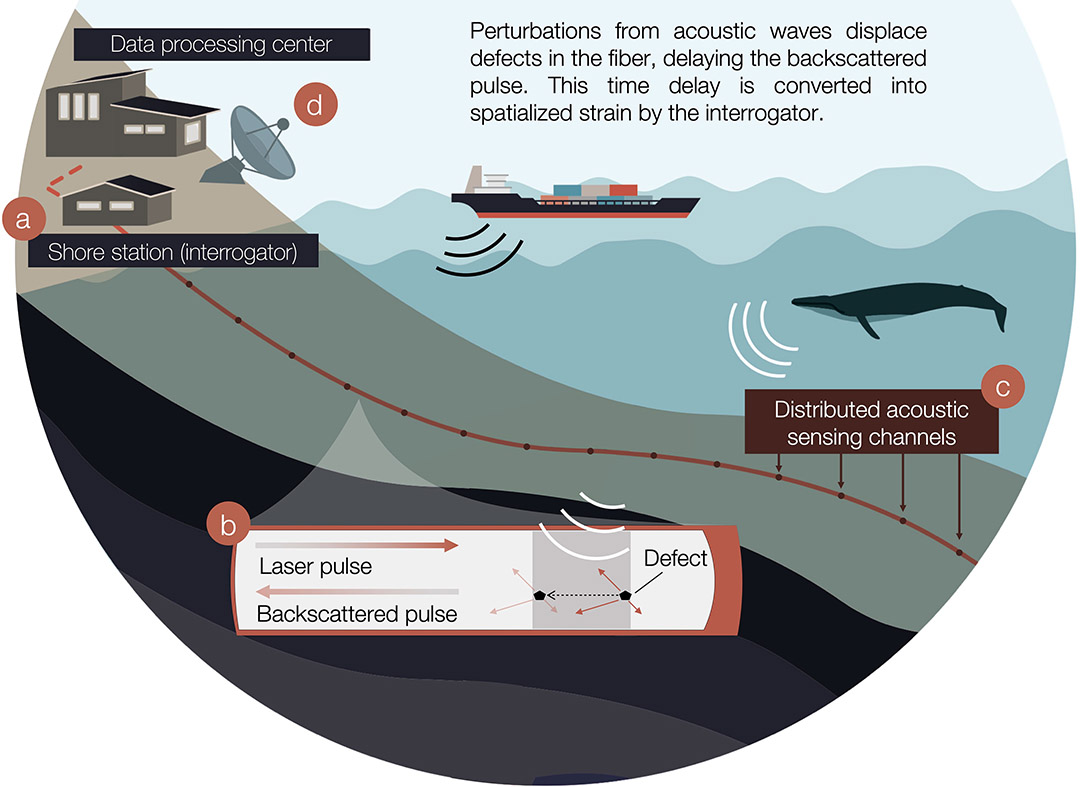
Distributed Acoustic Sensing, on the other hand, allows researchers to not only detect whale sounds, but they can use the fiber optic cable network to determine the position of whales spatially and temporally at unprecedented resolution, Bouffaut said.
«With this system, which is what we can basically call a hydrophone array, we have the chance to cover a much bigger area for monitoring. And because we receive the sound at multiple angles, we can even say where the animal was — the position of the animal. And that’s a huge advantage. And if we take it even further, which still requires some extra work, this could happen in real time, which would really be a game changer for acoustic monitoring of whales,» Kriesell explains.
Distributed Acoustic Sensing also enables “listening” to other sounds transmitted through the water, such as large tropical storms, earthquakes and ships. «If anything is moving close to or making an acoustic noise close to that fibre, which is buried in the seabed, we can measure that,» says Martin Landrø, a geophysicist at NTNU, head of the Center for Geophysical Prediction and co-author of the study. «So what we saw was a lot of ship traffic, of course, a lot of earthquakes, and we could also detect distant storms. And last but not least, whales. We detected at least 830 whale vocalizations altogether.»
The data transmission capacity of the Norwegian Research and Education Network (Uninett) is very high and allowed the raw data to be transmitted from Longyearbyen to Trondheim in near real time. «The researchers could, from Trondheim, almost instantly, start studying the signal recordings from the sea outside Svalbard. This is a very good example of a paradigm shift in distributed data collection,» says Olaf Schjelderup, head of Sikt – the Norwegian Agency for Shared Services in Education and Research – and co-author of the study.
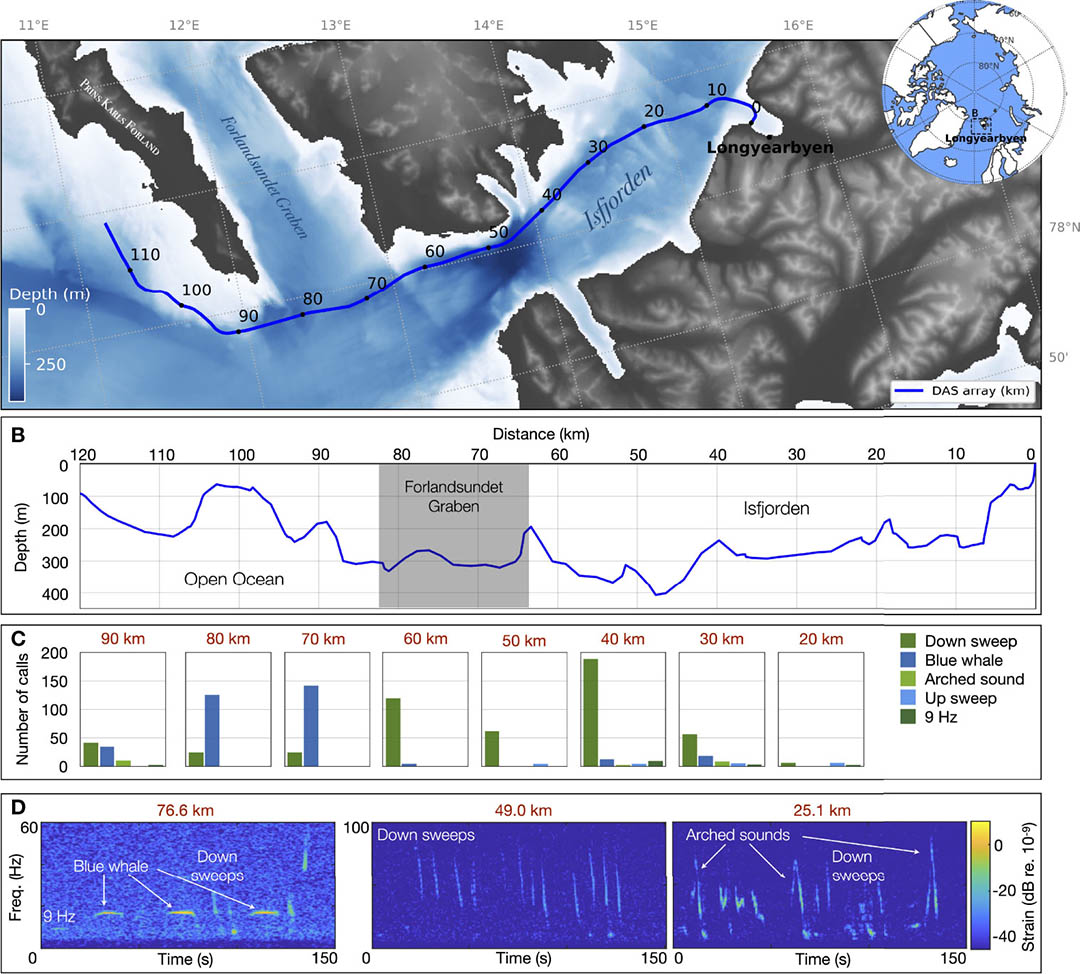
Bouffaut and Kriesell analyzed a total of 250 terabytes of data over 40 days. The challenge was not only the amount of data, but also that «we are looking for signals without knowing exactly what to expect. This is new technology and a new type of data that no one has looked at for finding whales,» Bouffaut said. Although the work was tedious, she still described it as «very, very exciting,» especially when they saw whale signals.
With the data now available, machine learning models could be trained to simplify and automate data analysis.
The two researchers identified so-called stereotyped calls of North Atlantic blue whales outside Isfjorden. They also discovered so-called D calls, in which the sound sweeps downward, and which can come from males, females and calves.
The Arctic is currently changing rapidly due to climate change, and with it the way animals and humans use it. While whales may frequent the polar waters for longer periods in the future as the ice recedes, at the same time new opportunities are opening up for shipping, fishing and tourism.
« So if whales are changing their uses of this area, and maybe using this area for more than for foraging or for activities where they’re very vulnerable, then having this type of technology can help us monitor these changes», Bouffaut says.

Bouffaut and Kriesell hope to set up the DAS system so that the data can be analyzed in real time. Then the information could be relayed to ships transiting waters with whales, reducing the risk of collisions. «Arctic ice is melting, and ship traffic has drastically increased in the Arctic. And that’s a problem for the animals. So if we have a means to inform ships about the location of whales in real time, we could stop or at least reduce the risk for ship strikes,» Kriesell says.
Julia Hager, PolarJournal
More on the topic:





